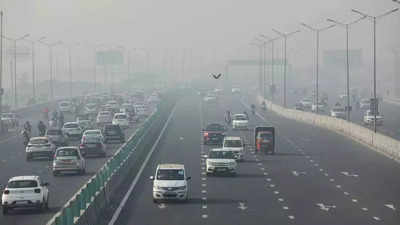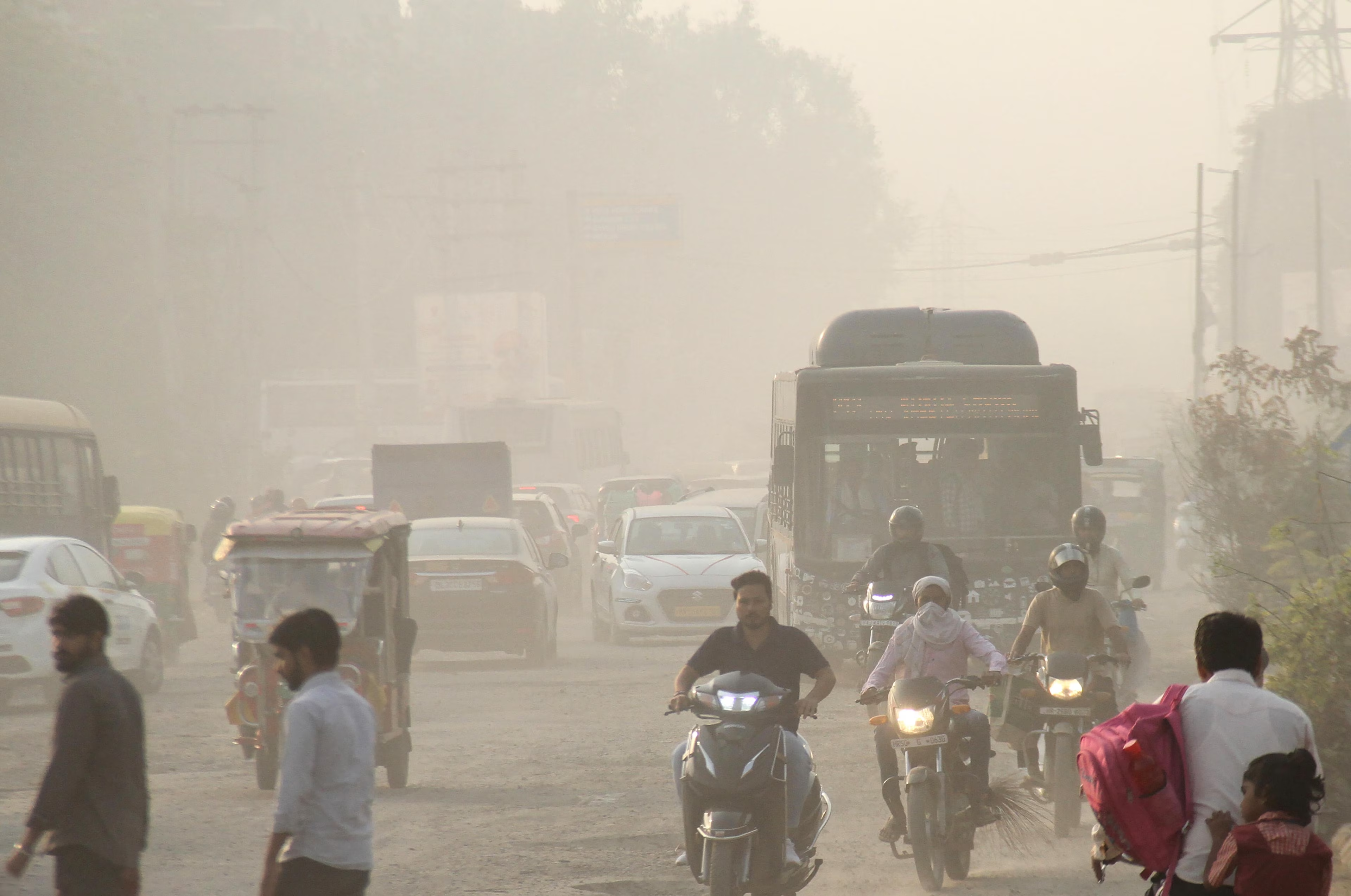The Hindu: Page 01
Syllabus: GS 3: Environment
Practice Question for Mains: Discuss the health risks of air pollution in both highly polluted and relatively cleaner cities of India as highlighted by recent studies. Evaluate the effectiveness of current government initiatives and suggest measures to enhance air quality management across diverse urban environments.
A multi-city analysis in India, published in Lancet Planet Health, reveals that spikes in air pollution in cities with cleaner air, like Bengaluru, can raise death rates more than in heavily polluted cities like Delhi.
- The study highlights significant health risks even at lower PM 2.5 levels.

About Report:
- Scientists analysed pollution and death registry data from 10 cities: Ahmedabad, Bengaluru, Chennai, Delhi, Hyderabad, Kolkata, Mumbai, Pune, Shimla, and Varanasi.
- Nearly 30,000 deaths, or 7.2% of annual deaths in these cities, were due to short-term PM 2.5 exposure.
- From air pollution, Delhi had about 12,000 deaths per year and Shimla had the lowest at 59 deaths per year (2008-2019).
- High pollution cities still saw a greater fraction of annual deaths due to air pollution:
- Delhi: 11.5% of annual deaths attributable to air pollution.
- Bengaluru: 4.8% of annual deaths attributable to air pollution.
- Bengaluru residents had 30% of the daily air pollution exposure compared to Delhi residents.
- Mortality risk rose quickly at lower PM 2.5 levels but plateaued at higher levels.
- Mortality risk was very high (2.65%) even on days with PM 2.5 levels below India’s national air quality standard of 60 micrograms per cubic metre.
The Lancet Planetary Health
- It is an open access journal that seeks to be the pre-eminent journal for enquiry into sustainable human civilizations in the Anthropocene.
- The journal publishes on subjects broadly encompassing sustainable development (the SDGs) and global environmental change.
Steps Taken by the Government of India to Tackle Air Pollution
The Government of India (GOI) has undertaken several initiatives and policies to combat air pollution and improve air quality across the country:
1. National Clean Air Programme (NCAP)
- Launched in January 2019, the NCAP aims to reduce particulate matter (PM2.5 and PM10) levels by 20-30% by 2024, relative to 2017 levels.
- It focuses on creating a comprehensive national-level strategy to tackle air pollution in 122 cities, known as “Non-Attainment Cities” (cities that consistently do not meet the National Ambient Air Quality Standards).
- The programme involves setting up city-specific action plans, monitoring mechanisms, and capacity-building measures.
2. Pradhan Mantri Ujjwala Yojana (PMUY)
- The PMUY scheme, launched in 2016, provides free LPG connections to economically disadvantaged families to reduce dependence on biomass-based fuels, which contribute significantly to indoor air pollution.
- Over 80 million households have benefitted from this scheme, leading to a reduction in harmful emissions from cooking stoves.
3. Bharat Stage (BS) Emission Standards
- The GOI has implemented stringent Bharat Stage emission norms, similar to the European standards, to regulate vehicular emissions.
- In April 2020, the country leapfrogged from BS-IV to BS-VI norms, reducing sulfur content in fuel by 80% and mandating advanced vehicle emission control technologies.
4. National Electric Mobility Mission Plan (NEMMP)
- Introduced to promote the adoption of electric vehicles (EVs) and hybrid vehicles.
- The Faster Adoption and Manufacturing of Hybrid and Electric Vehicles (FAME) scheme incentivizes the purchase of electric vehicles, establishment of charging infrastructure, and research & development.
5. Graded Response Action Plan (GRAP)
- Implemented in the National Capital Region (NCR) in 2017, GRAP specifies measures to be taken based on the severity of air pollution (e.g., shutting down brick kilns, banning construction activities, or implementing the odd-even vehicle rationing scheme).
- It provides a dynamic response mechanism to control air pollution depending on pollution levels.
6. Cleaner Fuels and Fuel Efficiency Standards
- The government has promoted the use of cleaner fuels such as compressed natural gas (CNG) and liquefied petroleum gas (LPG) for vehicles and industrial applications.
- Fuel efficiency standards have been established to reduce fuel consumption and associated emissions.
7. Promotion of Renewable Energy
- The government is actively promoting the use of renewable energy sources like solar, wind, and biomass to reduce dependence on fossil fuels.
- Initiatives like the International Solar Alliance (ISA) and setting up a 175 GW target for renewable energy by 2022 are part of this effort.
Previous Year Question (PYQ)
Q. Which of the following are the reasons/factors for exposure to benzene pollution? (2020)
1. Automobile exhaust
2. Tobacco smoke
3. Wood burning
4. Using varnished wooden furniture
5. Using products made of polyurethane
Select the correct answer using the code given below:
a) 1, 2 and 3 only
b) 2 and 4 only
c) 1, 3 and 4 only
d) 1, 2, 3, 4 and 5
Ans: a)
Explanation
· Benzene (C6H6) is a colorless, flammable liquid with a sweet odor. It evaporates quickly when exposed to air. Benzene is formed from natural processes, such as volcanoes and forest fires, but most of the exposure to benzene results from human activities.
· The main sources of benzene pollution in the environment include automobile exhaust, industrial sources, Tobacco smoke, wood burning and fuel evaporation from gasoline filling stations. Hence, 1, 2 and 3 are correct.
· Some industries use Benzene to make other chemicals that are used to make plastics, furniture etc., they are not the direct sources of Benzene pollution. Hence, 4 and 5 are not correct.





